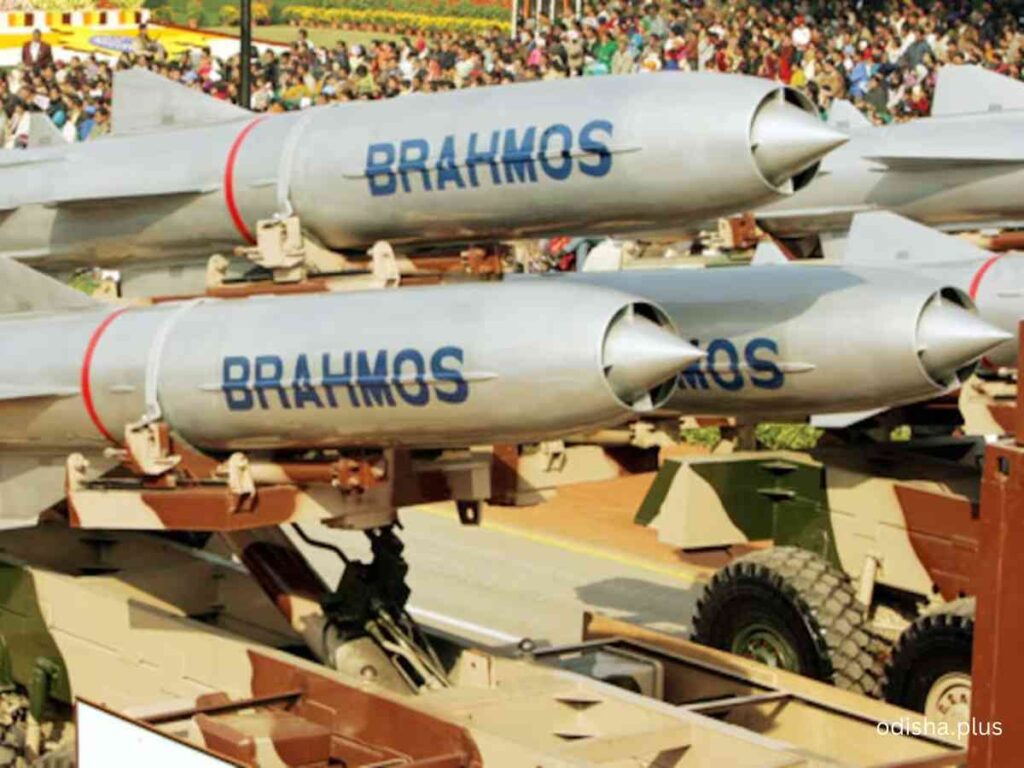Brahmos has a hoary history and Dr Kalam can justifiably be credited with seeding and fructifying this joint venture program with NPO Russia in 1995.
Prof Satya Narayan Misra

The recently concluded war with Pakistan witnessed the rare spectacle of India using two indigenous systems, the AKASH surface-to-air missiles and the BRAHMOS cruise missiles. On 7th May, AKASH reportedly shot down a PAK J17 Thunder, jointly developed by China & integrated by Pakistan, and on 10th May, the IAF targeted several strategic locations deep inside Pakistan in retaliation for attempted airspace violationby using Brahmos missiles alongside SCALP & HAMMER munitions. While inaugurating the new testing and integration facility at Lucknow, the UP CM had remarked: You must have seen a glimpse of the Brahmos missile during Operation Sindoor.
Brahmos has a hoary history, and Dr Kalam can justifiably be credited with seeding and fructifying this joint venture program with NPO Russia in 1995. In tandem with S-400 missiles, which were imported from Russia, which thwarted Pakistan’s swarm drone and missile attacks, Brahmos and AKASH have become signature tunes of our strategic superiority in military systems over our adversaries like Pakistan. The story of India being self-reliant in missile systems was envisioned by Dr Arunachalam as SA to RM and realized in action by Dr Kalam, when the IGMDP program was launched in 1983 to design and develop Surface to Surface Missile (Short & Long range) and Surface to Air Missiles and Anti-Tank Missiles.
While the Short-range Prithvi missiles with 150 km range were inducted into service in 1994, the SAM missiles like AKASH had several technical hiccups. Kalam, the visionary, tried to circumvent this limitation by forging a JV with NPO Russia by establishing a company in December 1995, with India’s stake being 50.5%, with a contribution of $126.25 M. The name Brahmos fused the two rivers, the Brahmaputra of India and the Moskva of Russia. It’s a two-stage weapon system with a solid fuel booster that detaches after take-off. A liquid-fuelled ramjet engine then propels it at a speed nearing 3 MACH. It can cruise at an altitude up to 15 km and strike as low as 10 meters above the ground. It follows a fire-and-forget principle. Once launched, no further guidance is required. The missile’s low radar signature and high kinetic energy make it difficult to intercept.
India is the second largest importer of conventional arms in the world (8.3% ) , fifth largest spender on military, spending $86 B (2.3% of GDP) as against $10.2 B ( 2.7% of GDP ) as per the SIPRI report. The huge asymmetry in their military assets is reflected in India having 2229 military aircraft as against 1399 of Pakistan, 3151 combat tanks compared with Pakistan’s 1839. While Pakistan Navy has 121 naval assets, India has 293c, including two aircraft carriers & 18 submarines as against 8 by Pakistan. In terms of nuclear weapons as per the International Campaign to Abolish Nuclear Weapons ( ICANW), India spent $2.7 billion and Pakistan %$ 1 billion in 2023.
The majority of India’s imports come from Russia, though it has been shifting its arms sourcing to France (Rafael aircraft), Israel (UAVs), and the United States (C-130 J transport aircraft, P-81 Poseidon maritime surveillance aircraft, and Apache combat helicopter). While the USA was the main arms supplier to Pakistan till 1990, China supplied 81% of Pakistan’s imports, like J10 C aircraft & J 15 during 2020-24, while 36% of India’s arms were sourced from Russia during this period. The tilt is towards the USA and France. A simmering story is swirling around that the Chinese-designed C10C has downed three Rafael, 1 Mig 29 and 1 SU-30. It seems that Chinese technology is having a head start over European technology. While comparisons are odious, it seems the PL-15 missiles fired from J10 C aircraft have a better range (200-300 km) compared MBDA missiles of Rafael, which have a range of 150 km. As against this, Rafael hasa greater range (3700 kms ) as against 2940 kms of J 10C.
Some of the unexpected fallout of the short war was the insistence of both the USA & Russia to deescalate, while China seemed to have been keen to see how its air assets perform against Indian targets. Turkey seems to be a solid partner in supplying drones, which were reportedly repulsed by the S-400 surface-to-air missile system supplied by Russia. Russia has, in fact, proposed joint production of its latest S-500 air defence system. It was surprising the way Russia did not stand by India in the present conflict, unlike its rock-solid support to India in the 1971 war by checkmating the US move to intimidate India through its aircraft carrier. It looks as though both Superpowers are now competing with each other to sell their military hardware, the USA its F-35 stealth aircraft, and Russia its SU-57. Mr Modi’s strategy to have an open acquisition policy instead of Mrs Gandhi’s clear predilection for Russian systems has left India without a steadfast partner when confronted with war. USA, as the mediator in brokering a ceasefire, has raised many eyebrows.
One of the issues that concerns India is whether Pakistan will use the nuclear option if pushed to the brink. In an interview in 2003 with Shyam Bhatia, Benazir Bhutto had said, “Neither India can use the Nuke, nor can Pakistan. Whichever country is throwing that nuke knows there is not enough time or space, and is going to get it thrown back. “
The Benazir prognostication remains valid now. The brief war sadly did not unearth the five-armed terrorists who committed the dastardly crime against 26 innocent tourists. Nor has it thrown enough light on the veracity of our air assets being destroyed by J 10C. While addressing the nation, the PM should have acknowledged the death of civilians, including children, and flagged the deep strides India has made in the indigenous production of military assets like the AKASH & Brahmos. Farid Zakaria bemoaned that the backroom challenge between India & Pakistan during the present war was absent, unlike in the past. Dialogues should never be shelved. We must bolster our defence capability in strategic systems through JVs with reputed global manufacturers and design & development collaboration with reputed design houses.
(The writer is a former Joint Secretary (Aerospace), Ministry of Defence. Views expressed are personal.)



























